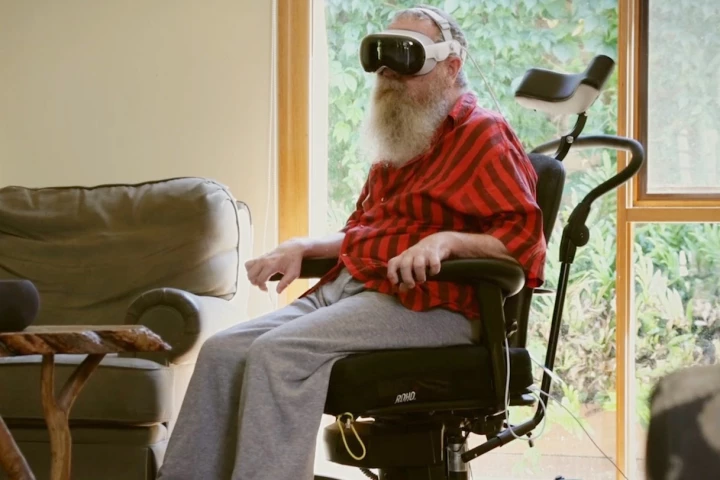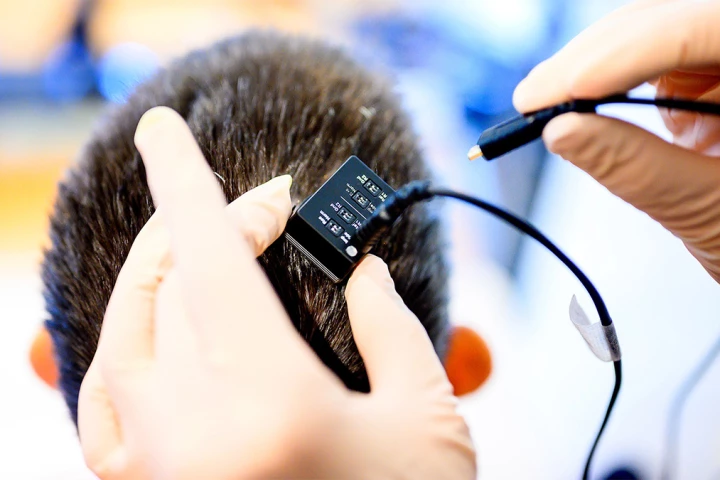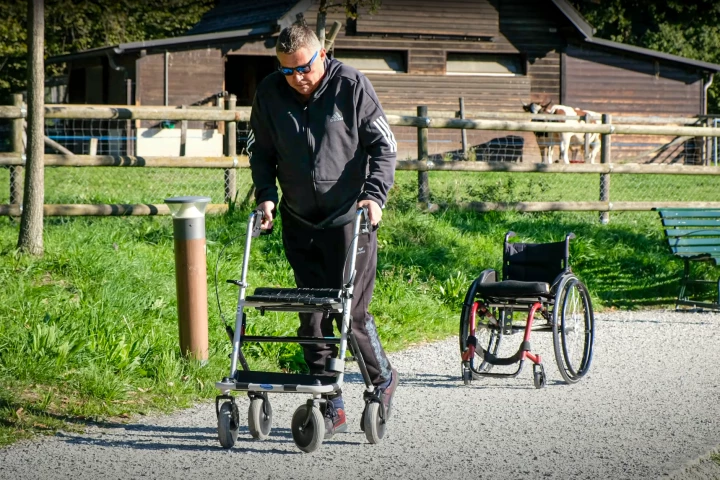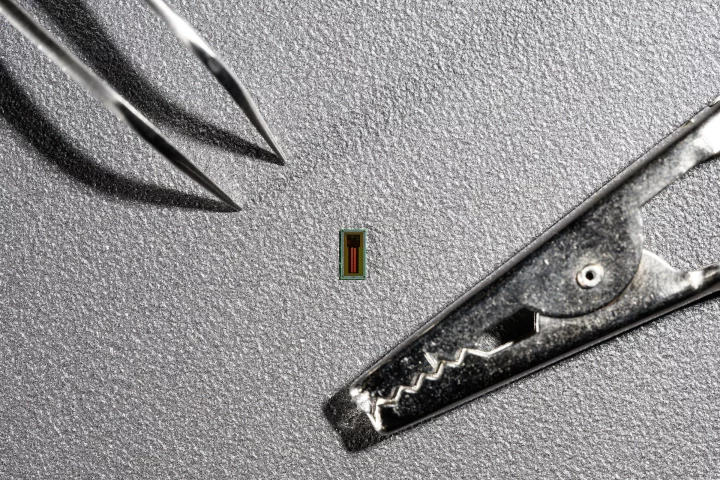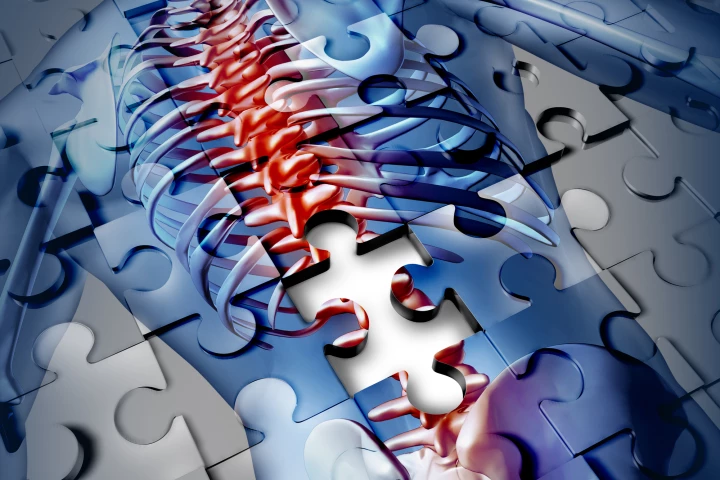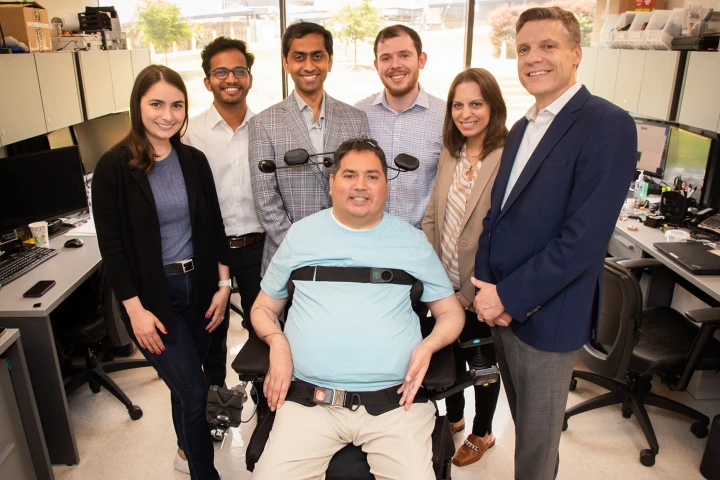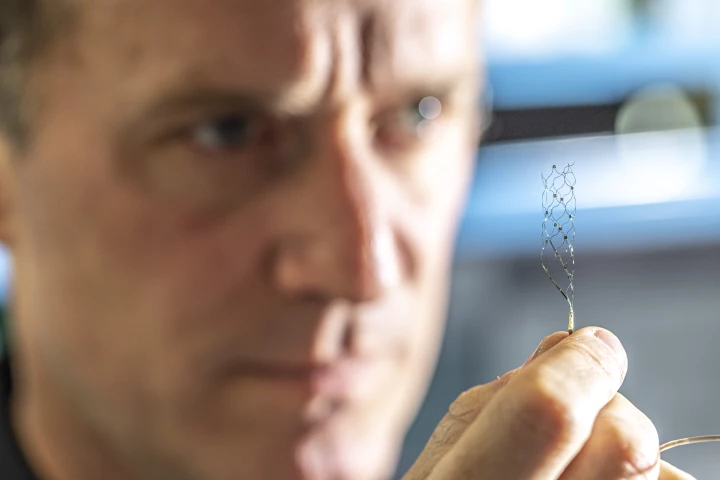Paralysis
-
In another advancement in the field of brain-computer interfaces, a new implant-based system has enabled a paralyzed person to not only talk, but also 'sing' simple melodies through a computer – with practically no delay.
-
Apple is getting into the brain-computer interface business, reveals New York-based startup Synchron. The idea is to enable people with limited mobility use iPhones, iPads, and the Vision Pro headset by transmitting commands through their minds.
-
A team of California-based researchers has developed an incredible AI-powered system to restore natural speech for paralyzed people in real time and using their own voices.
-
A new study has tested innovative proof-of-concept technology that syncs electrical stimulation with rehabilitation robotics to enable individuals paralyzed after spinal injury to move more naturally. The tech should improve recovery outcomes.
-
Two patients with spinal injuries have seen improvements in their ability to walk again, thanks to deep brain stimulation. Intriguingly, the therapy targets a region of the brain that normally isn’t associated with motor skills.
-
Synchron has announced that a trial participant has used its brain-computer interface to turn on the lights in his home, see who is at the door, and choose what to watch on the TV – hands-free and without even a voice command.
-
The brain-machine interface race is on. While Elon Musk's Neuralink has garnered most of the headlines in this field, a new small and thin chip out of Switzerland makes it look downright clunky by comparison. It also works impressively well.
-
Scientists at Johns Hopkins have developed a new spinal stimulator that can help restore lower limb function to paralyzed patients. The tiny device can be non-invasively implanted through a syringe.
-
A complete spinal cord injury results, tragically, in total paralysis of all limbs and muscles below the injury site. But now, scientists at EPFL have demonstrated in mice a new gene therapy that can regenerate nerves and restore the ability to walk.
-
While fans of Another Brick in the Wall (Part 1) may be horrified, researchers have recreated the song from brain activity. In the process, they discovered the way brains process rhythm and melody, which has huge implications for therapies.
-
A team of researchers, engineers and surgeons have used a novel ‘double neural bypass’ technology to restore arm movement and sensation to a quadriplegic man. It’s hoped the technology will help others affected by impaired movement or paralysis.
-
Australian startup Synchron, backed by Bill Gates and Jeff Bezos, looks set to beat Elon Musk's Neuralink to market with a safe, reliable brain-computer interface that any hospital can quickly install – without cutting a hole in your skull.
Load More

